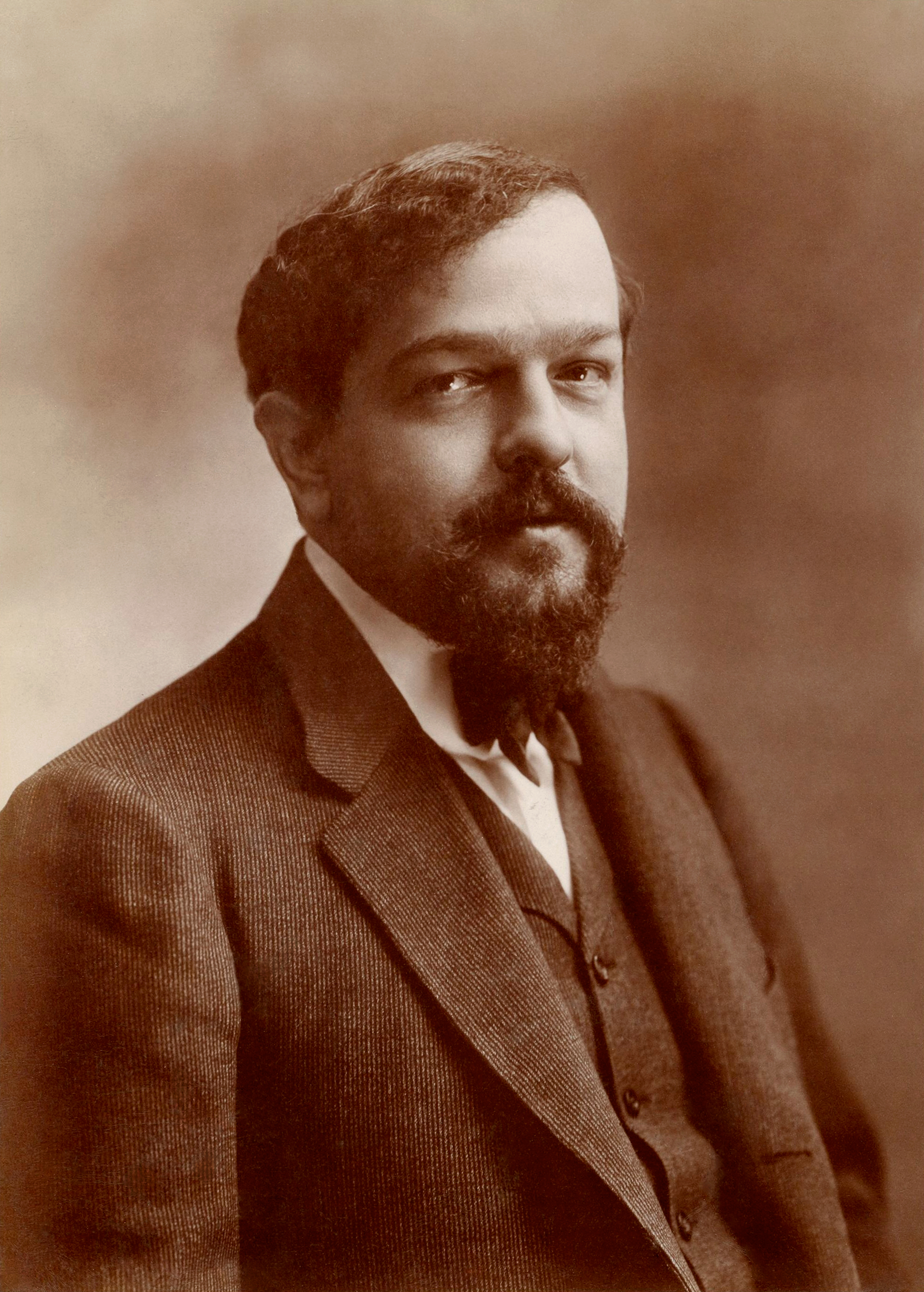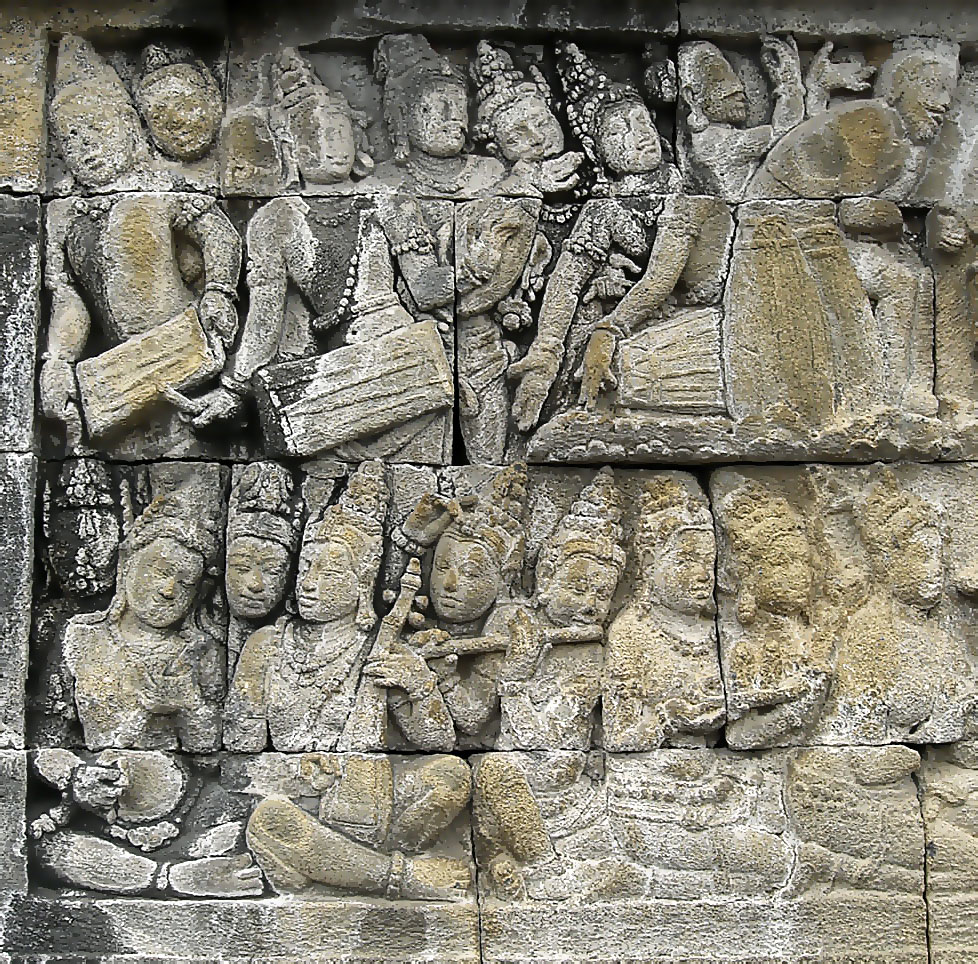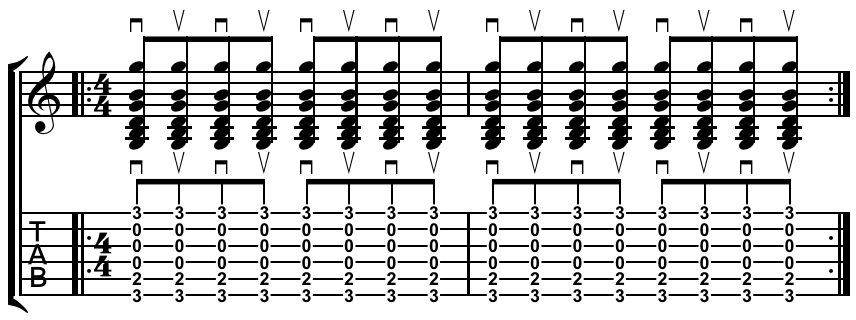|
Estampes
''Estampes'' (Prints), L. 100, is a composition for solo piano by Claude Debussy. It was finished in 1903. The first performance of the work was given by Ricardo Viñes at the Salle Érard of the Société nationale de musique in Paris on 9 January 1904. This suite with 3 movements is one of a number of piano works by Debussy which are often described as impressionistic, a term borrowed from painting. This style of composition had been pioneered by Ravel in ''Jeux d'eau'' written in 1901, and was soon adopted by Debussy (for example in the earlier numbers of ''Images''), but Debussy did not himself identify as an impressionist. Structure ''Estampes'' consists of three movements: I. ''Pagodes'' ''Pagodes'' evokes Indonesian gamelan music, which Debussy first heard in the Paris World Conference Exhibition of 1889. It makes extensive use of pentatonic scales and mimics traditional Indonesian melodies. Four different pentatonic scales are incorporated within the p ... [...More Info...] [...Related Items...] OR: [Wikipedia] [Google] [Baidu] |
Claude Debussy
Achille Claude Debussy (; 22 August 1862 – 25 March 1918) was a French composer. He is sometimes seen as the first Impressionism in music, Impressionist composer, although he vigorously rejected the term. He was among the most influential composers of the late 19th and early 20th centuries. Born to a family of modest means and little cultural involvement, Debussy showed enough musical talent to be admitted at the age of ten to France's leading music college, the Conservatoire de Paris. He originally studied the piano, but found his vocation in innovative composition, despite the disapproval of the Conservatoire's conservative professors. He took many years to develop his mature style, and was nearly 40 when he achieved international fame in 1902 with the only opera he completed, ''Pelléas et Mélisande (opera), Pelléas et Mélisande''. Debussy's orchestral works include ''Prélude à l'après-midi d'un faune'' (1894), ''Nocturnes (Debussy), Nocturnes'' (1897–1899 ... [...More Info...] [...Related Items...] OR: [Wikipedia] [Google] [Baidu] |
Jeux D'eau (Ravel)
''Jeux d'eau'' () is a piece for solo piano by Maurice Ravel, composed in 1901 and given its first public performance the following year. The title is variously translated as "Fountains", "Playing Water" or literally "Water Games". At the time of writing ''Jeux d'eau'', Ravel was a student of Gabriel Fauré, to whom this piece is dedicated. The work is in a single movement, typically lasting between four and a half and six minutes in performance. ''Jeux d'eau'' has a claim to being the first example of impressionism in piano music. The piece is known for its virtuosic, fluid, and highly evocative nature, and is considered one of Ravel's most important works for piano. The piece is characterized by its fast, shimmering, and cascading piano figurations, which are meant to evoke the sound of flowing water. The overall atmosphere of "Jeux d'eau" is one of lightness, playfulness, and sensuousness, and the piece is often described as a musical depiction of the joy and beauty of nat ... [...More Info...] [...Related Items...] OR: [Wikipedia] [Google] [Baidu] |
List Of Compositions By Claude Debussy
This is a complete list of compositions by Claude Debussy initially categorized by genre, and sorted within each genre by "L²" number, according to the 2001 revised catalogue by musicologist François Lesure, which is generally in chronological order of composition date. "L¹" numbers are also given from Lesure's original 1977 catalogue.Lesure, François: ''Catalogue de l'œuvre de Claude Debussy'', Genève: Minkoff (1977) . (The "L¹" and "L²" headers are clickable and doing so will sort the entire list by L¹ or L² number. Clicking that header again will reverse the order; to return to the genre category order, reload the webpage.) List of compositions Notes References External links Catalogue François Lesure des œuvres de Claude Debussyon Musicbrainz (has both versions of Lesure's catalogue, with newer updates to the 2001 version). ''Piano Library: Claude Debussy''Complete list of Debussy piano works with musical extracts, difficulty ratings and recommended editions ... [...More Info...] [...Related Items...] OR: [Wikipedia] [Google] [Baidu] |
Salle Érard
Salle Érard The salle Érard () is a music venue located in Paris, 13 rue du Mail in the 2nd arrondissement of Paris. It is part of the hôtel particulier which belonged, from the 18th century, to the family of piano, harp and harpsichord manufacturers. Small in size, but well isolated from the noises of the city, enjoying good acoustics, it is more particularly adapted to chamber music. During the 19th and the beginning of the 20th, it was the place of premières and debuts noted for both compositions and for interpreters, among which: Érik Satie (orchestrations of his Gymnopédies by Claude Debussy), Jacques Ibert, ''les histoires'' (ten pieces for piano) (1923), Nellie Melba, Ricardo Viñes, Maurice Ravel, ''Miroirs'' (1906), '' Menuet antique'' (1892), '' Histoires naturelles'' with Jane Bathori (1907), '' Sonate pour violon et piano'' (1927), '' Trois poèmes de Mallarmé'' (1914), Camille Saint-Saens (1860)., Ignacy Jan Paderewski (1888), Claude Debussy, '' Tripty ... [...More Info...] [...Related Items...] OR: [Wikipedia] [Google] [Baidu] |
Ricardo Viñes
Ricardo Viñes y Roda (, , ; 5 February 1875 – 29 April 1943) was a Spanish pianist. He gave the premieres of works by Ravel, Debussy, Satie, Falla and Albéniz. He was the piano teacher of the composer Francis Poulenc and the pianists Marcelle Meyer, Joaquín Nin-Culmell and Léo-Pol Morin. Life and career Viñes was born in Lleida, Spain. He studied the piano at the Paris Conservatoire under Charles-Wilfrid de Bériot, and composition and harmony with Benjamin Godard and Albert Lavignac.Timbrell, Charles and Esperanza Berrocal"Viñes, Ricardo" Grove Music Online, Oxford University Press, retrieved 19 September 2014 In 1895 Viñes made his début at the Salle Pleyel, Paris. From 1900 he had an international career, touring in Russia and throughout Europe and South America. Between 1930 and 1936 he lived in Argentina, returning to Paris in 1936 where he continued to play until the final year of his life. According to Charles Timbrell and Esperanza Berrocal in the ... [...More Info...] [...Related Items...] OR: [Wikipedia] [Google] [Baidu] |
Images (piano Suite)
''Images'' (usually pronounced in French as ) is a suite of six compositions for solo piano by Claude Debussy. They were published in two books/series, each consisting of three pieces. These works are distinct from Debussy's ''Images pour orchestre''. The first book was composed between 1901 and 1905, and the second book was composed in 1907. The total duration is approximately 30 minutes. With respect to the first series of ''Images'', Debussy wrote to his publisher, Jacques Durand: "Without false pride, I feel that these three pieces hold together well, and that they will find their place in the literature of the piano ... to the left of Schumann, or to the right of Chopin... " Debussy wrote another collection, ''Images oubliées'' (L. 87), in the Winter of 1894 and dedicated it to Yvonne Lerolle, daughter of the painter Henry Lerolle. Structure *Book 1 (or "1st series") ( L. 110) # "Reflets dans l'eau" (Reflections in the water) in D major # "Hommage à Rameau" (Tribute to R ... [...More Info...] [...Related Items...] OR: [Wikipedia] [Google] [Baidu] |
Gamelan
Gamelan (; ; , ; ) is the traditional musical ensemble, ensemble music of the Javanese people, Javanese, Sundanese people, Sundanese, and Balinese people, Balinese peoples of Indonesia, made up predominantly of percussion instrument, percussive instruments. The most common instruments used are metallophones (played with mallets) and a set of hand-drums called ''kendang'', which keep the beat (music), beat. The ''kemanak'', a banana-shaped idiophone, and the ''gangsa'', another metallophone, are also commonly used gamelan Musical instrument, instruments on Bali. Other notable instruments include xylophones, bamboo flutes (similar to the Indian ''bansuri''), a bowed string instrument called a ''rebab'' (somewhat similar to the ''gadulka'' of Bulgaria), and a zither-like instrument called a ''siter'', used in Javanese gamelan. Additionally, vocalists may be featured, being referred to as ''sindhen'' for females or ''gerong'' for males.Sumarsam (1998)''Introduction to Javanese ... [...More Info...] [...Related Items...] OR: [Wikipedia] [Google] [Baidu] |
Pagoda
A pagoda is a tiered tower with multiple eaves common to Thailand, Cambodia, Nepal, India, China, Japan, Korea, Myanmar, Vietnam, and other parts of Asia. Most pagodas were built to have a religious function, most often Buddhist, but sometimes Taoist or Hindu, and were often located in or near viharas. The pagoda traces its origins to the stupa, while its design was developed in ancient India. Chinese pagodas () are a traditional part of Chinese architecture. In addition to religious use, since ancient times Chinese pagodas have been praised for the spectacular views they offer, and many classical poems attest to the joy of scaling pagodas. The oldest and tallest pagodas were built of wood, but most that survived were built of brick or stone. Some pagodas are solid with no interior. Hollow pagodas have no higher floors or rooms, but the interior often contains an altar or a smaller pagoda, as well as a series of staircases for the visitor to climb to see the view from a ... [...More Info...] [...Related Items...] OR: [Wikipedia] [Google] [Baidu] |
Rubato
; , , ;) is a musical term referring to expressive and rhythmic freedom by a slight speeding up and then slowing down of the tempo of a piece at the discretion of the soloist or the conductor. Rubato is an expressive shaping of music that is a part of phrasing. While rubato is often loosely taken to mean playing with expressive and rhythmic freedom, it was traditionally used specifically in the context of expression as speeding up and then slowing down the tempo. In the past, expressive and free playing (beyond only rubato) was often associated with the terms "ad libitum". Rubato, even when not notated, is often used liberally by musicians, e.g. singers frequently use it intuitively to let the tempo of the melody expressively shift slightly and freely above that of the accompaniment. This intuitive shifting leads to rubato's main effect: making music sound expressive and natural. Nineteenth century composer-pianist Frédéric Chopin is often mentioned in the context of rubato ... [...More Info...] [...Related Items...] OR: [Wikipedia] [Google] [Baidu] |
Double Harmonic Scale
The double harmonic major scaleStetina, Troy (1999). ''The Ultimate Scale Book'', p. 59. . is a musical scale with a flattened second and sixth degree. This scale is enharmonic to the Mayamalavagowla raga, Bhairav raga, Byzantine scale, Arabic scale (Hijaz Kar),Christiansen, Mike (2003). ''Mel Bay Complete Guitar Scale Dictionary'', p. 43. . and Gypsy major scale. It can be likened to a gypsy scale because of the diminished step between the 1st and 2nd degrees. ''Arabic scale'' may also refer to any Arabic mode, the simplest of which, however, to Westerners, resembles the double harmonic major scale. : Details The sequence of steps comprising the double harmonic scale is : :half, augmented second, half, whole, half, augmented second, half Or, in relation to the tonic note :minor second, major third, perfect fourth and fifth, minor sixth, major seventh, octave However, this scale is commonly represented with the first and last half step each being represented with qu ... [...More Info...] [...Related Items...] OR: [Wikipedia] [Google] [Baidu] |
Granada
Granada ( ; ) is the capital city of the province of Granada, in the autonomous communities of Spain, autonomous community of Andalusia, Spain. Granada is located at the foot of the Sierra Nevada (Spain), Sierra Nevada mountains, at the confluence of four rivers, the Darro (river), Darro, the Genil, the Monachil (river), Monachil and the Beiro. Ascribed to the Vega de Granada ''comarca'', the city sits at an average elevation of Above mean sea level, above sea level, yet is only one hour by car from the Mediterranean coast, the Costa Tropical. Nearby is the Sierra Nevada Ski Station, where the FIS Alpine World Ski Championships 1996 were held. In the 2021 national census, the population of the city of Granada proper was 227,383, and the population of the entire municipal area was estimated to be 231,775, ranking as the Ranked lists of Spanish municipalities, 20th-largest urban area of Spain. About 3.3% of the population did not hold Spanish citizenship, the largest number of these ... [...More Info...] [...Related Items...] OR: [Wikipedia] [Google] [Baidu] |
Strum
In music, strumming is a way of playing a stringed instrument such as a guitar, ukulele, or mandolin. A strum or stroke is a sweeping action where a finger or plectrum brushes over several strings to generate sound. On most stringed instruments, strums are typically executed by a musician's designated strum hand (typically the musician's dominant hand, which is often responsible for generating the majority of sound on a stringed instrument), while the remaining hand (referred to as the fret hand on most instruments with a fingerboard) often supports the strum hand by altering the tones and pitches of any given strum. Strums are often contrasted with plucking, as a means of vibrating an instrument's strings. In plucking, a specific string or designated set of strings are individually targeted to vibrate, whereas in strumming, a less precise targeting is usually used. Compared to other plucking techniques, any group of strings brushed in a single sweep by a plectrum could be ... [...More Info...] [...Related Items...] OR: [Wikipedia] [Google] [Baidu] |




